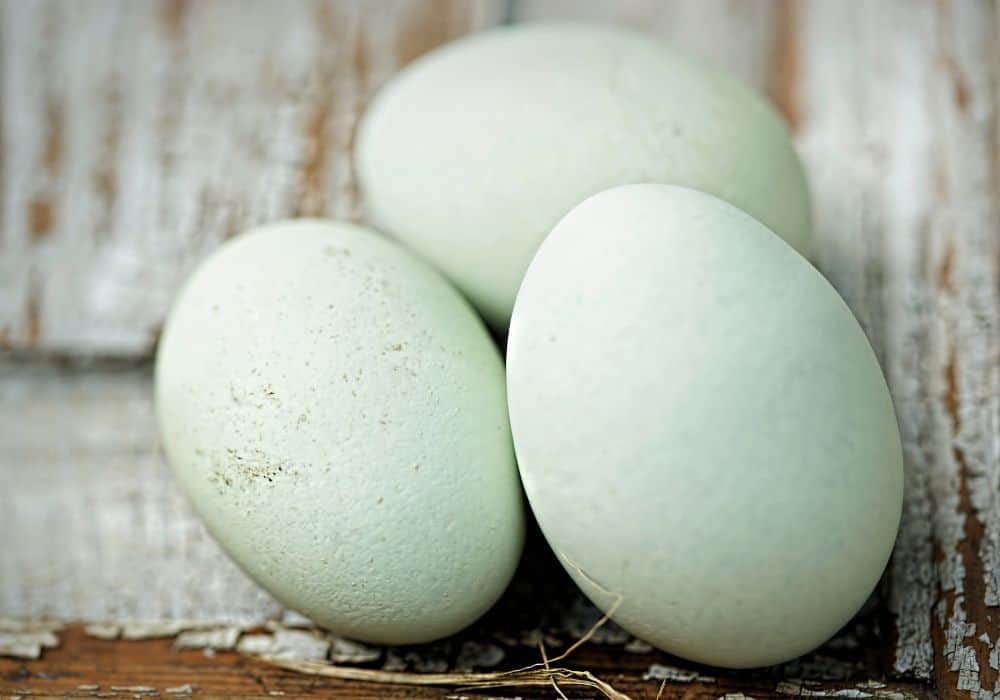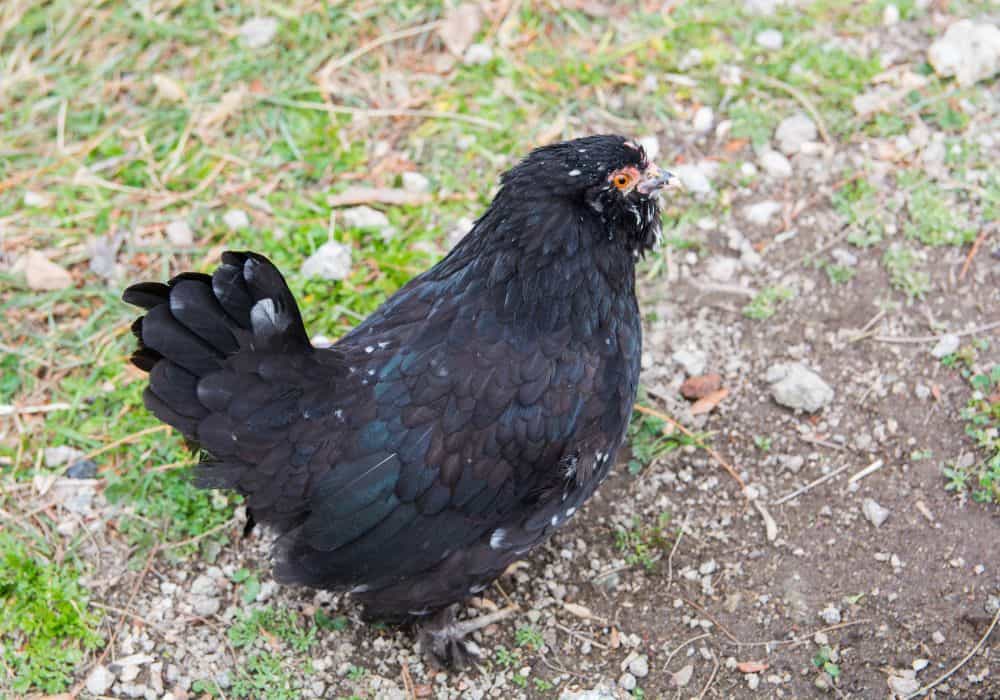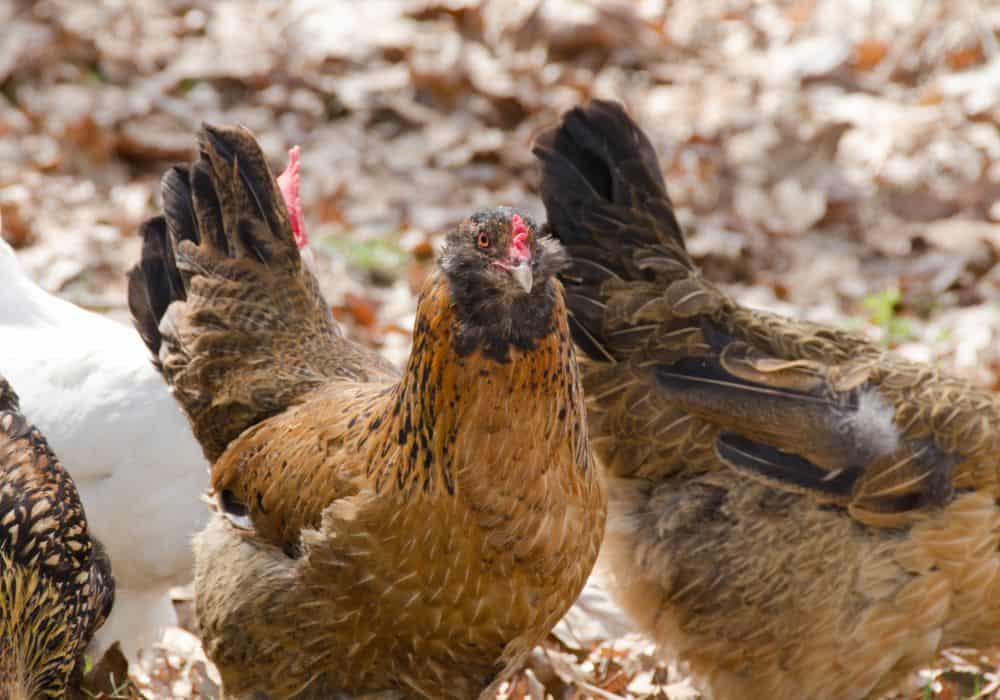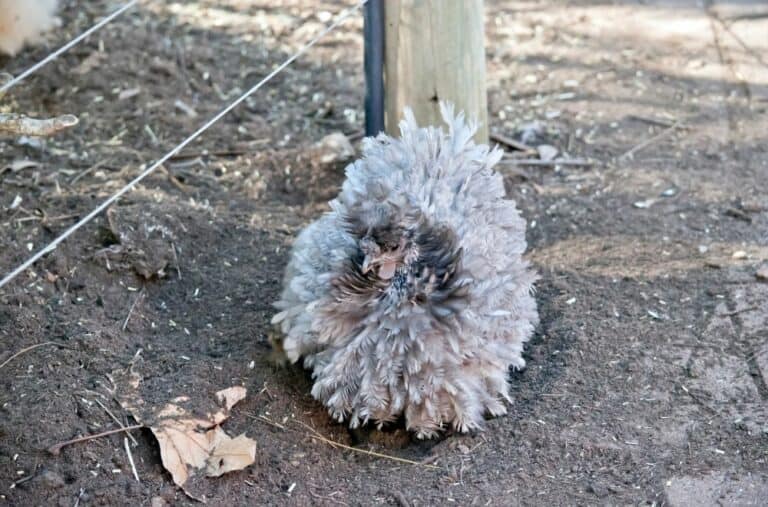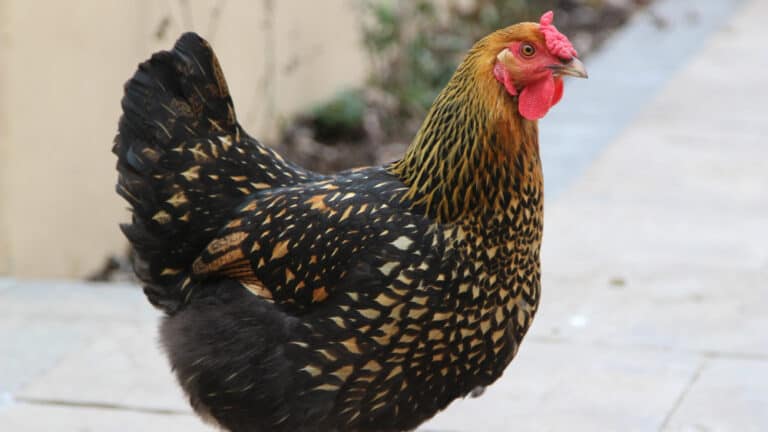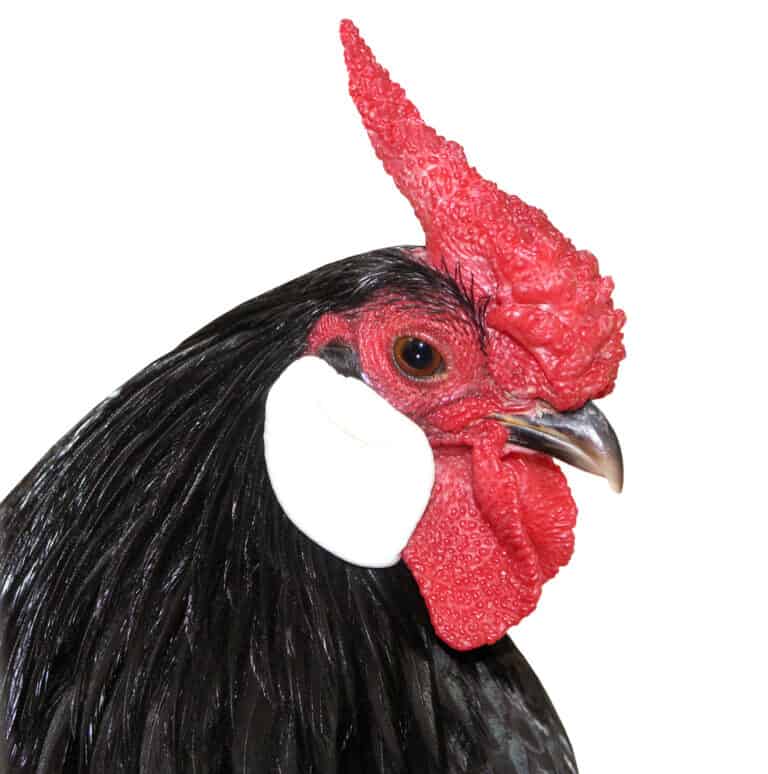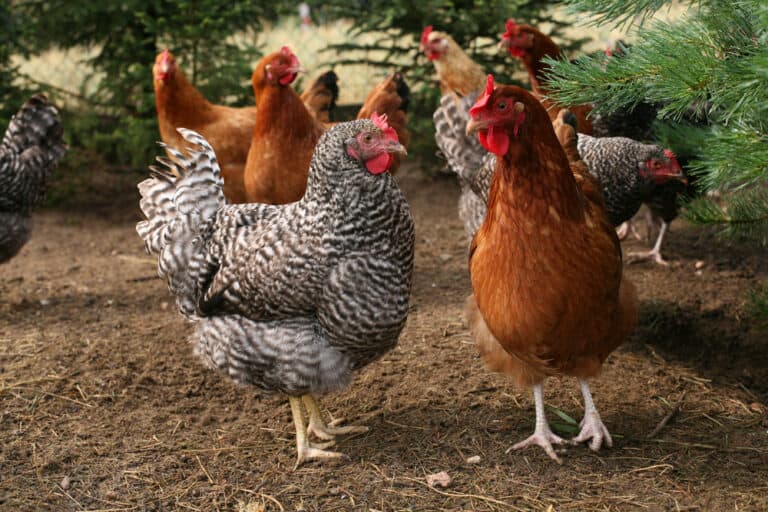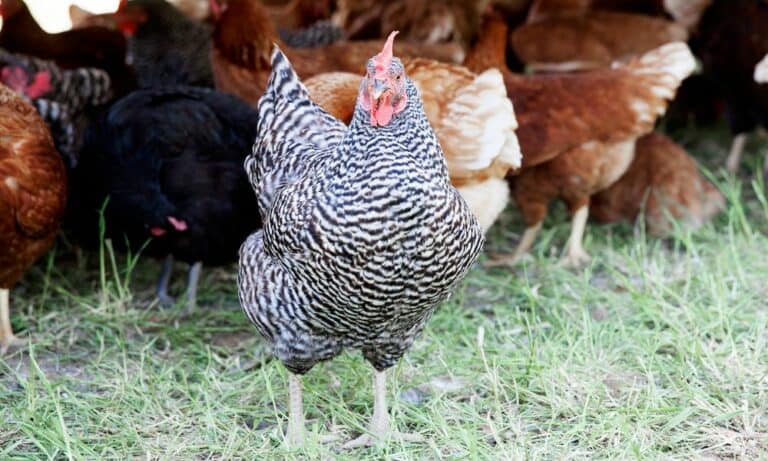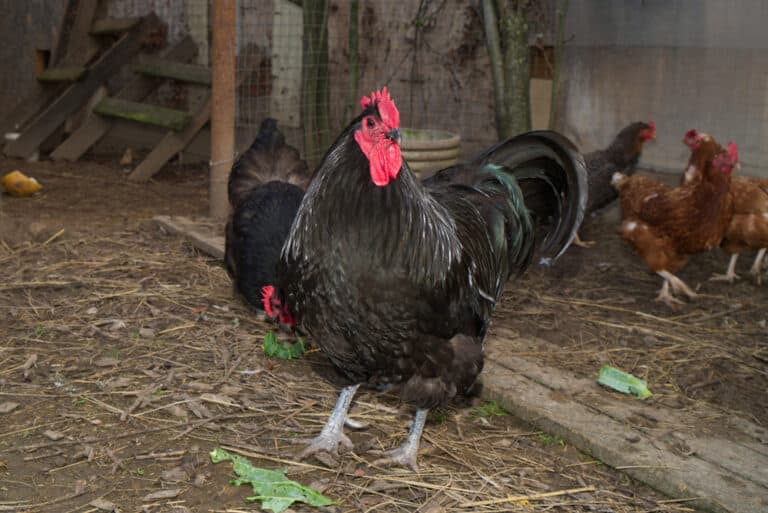Chickens that lay blue eggs are almost regarded as royalty, and they’ve become more popular in recent years. Both breeders and hobbyists find these breeds desirable for their flocks, but there are only a handful of varieties that lay blue eggs reliably.
From the Araucana to the Dongxiang, each breed or hybrid has unique characteristics to consider before bringing them into your coop.
This guide explains the unique way that these chickens make their eggs to achieve the blue color as well as which breeds you can count on for colorful eggs. Whether you want an exotic, aloof breed or need one that’s safe around small children, you will find them on this list.
How Chickens Make Blue Eggs
Before you learn how eggs get their color, you should know how the process starts.
A hen holds thousands of ova in its ovaries, waiting for the right time to become a full-fledged egg. The hen releases one of these yolks at a time, taking about 25 hours to form and lay the egg.
The first stages of formation occur when the ova moves out of the ovary into a tube called the oviduct. It spends about 4 hours here before moving into the magnum and receiving layers of egg white protein.
These layers intend to nurture the yolk as it develops. They also create a foundation for the eventual formation of the shell membrane and shell that intend to protect the egg in the future.
From here, the egg moves through an area called the isthmus where the shell membrane fibers are produced. After this quick pit stop, the egg reaches the shell gland.
The majority of the egg formation cycle occurs in the shell gland. It takes about 20 hours for the calcification process to complete so that multiple layers of calcium may form the shell that protects the egg.
How Egg Coloring Occurs
All eggs start white and receive their color at the end of the formation process, although some chickens leave no pigment overlay and simply produce white, off-white, or cream-colored eggs.
Most of the eggs from backyard flocks are brown. These eggs are colored with a gel-like application of protoporphyrin, a substance made of the hemoglobin of the hen’s blood. The exact shade of brown depends on the genes of your particular hen.
Hens only make a certain amount of this dye per egg, causing an uneven appearance in some instances. Larger eggs may appear paler than those of standard size, and some eggs may have a two-tone look. If an egg moves slowly through the reproductive tract, it may take on a speckled appearance.
When you clean chicken eggs, part of this brown coloring will rub off and leave paler patches. This is entirely normal, and it’s nothing to worry about.
What Happens When Chickens Lay Blue Eggs
Chickens that lay blue eggs do not dye their shells with protoporphyrin. Instead, a blue egg layer produced oocyanin, a liver pigment derived directly from biliverdin. This pigment is actually laid into the calcium carbonate base of the shell that occurs during its formation.
The blue color of these eggs is considered a true color, like white, because it is part of the shell. It cannot be rubbed off like the pigment on brown eggs, and it remains the same throughout all layers.
Blue egg layers contribute to other egg colors, such as green, when certain breeds are crossed. For example, if you breed a chicken that lays dark brown eggs with a blue egg layer, the resulting hybrid may lay eggs with an olive color.
While blue eggs don’t taste different or offer any different nutritional structure, their unique appearance is highly desirable. Blue egg layers have surged in popularity as more people start their own flocks at home and want more beautiful eggs and unique breeds of chicken.
Where the Blue Egg Laying Gene Comes From
Recent studies suggest that the blue egg laying gene comes from a retrovirus that altered chicken DNA. This genetic modification occurs when the virus carries the genetic blueprint and reproduces in the host, becoming part of the DNA of the affected cell.
This is why chickens in different locations, such as those in South America and those in Asia, could independently evolve to produce blue egg laying breeds.
It’s also likely that owners of domesticated chickens noticed when certain chickens would lay blue eggs and would selectively breed those lines to eventually create a reliable blue-laying trait.
9 Chicken Breeds That Lay Blue Eggs
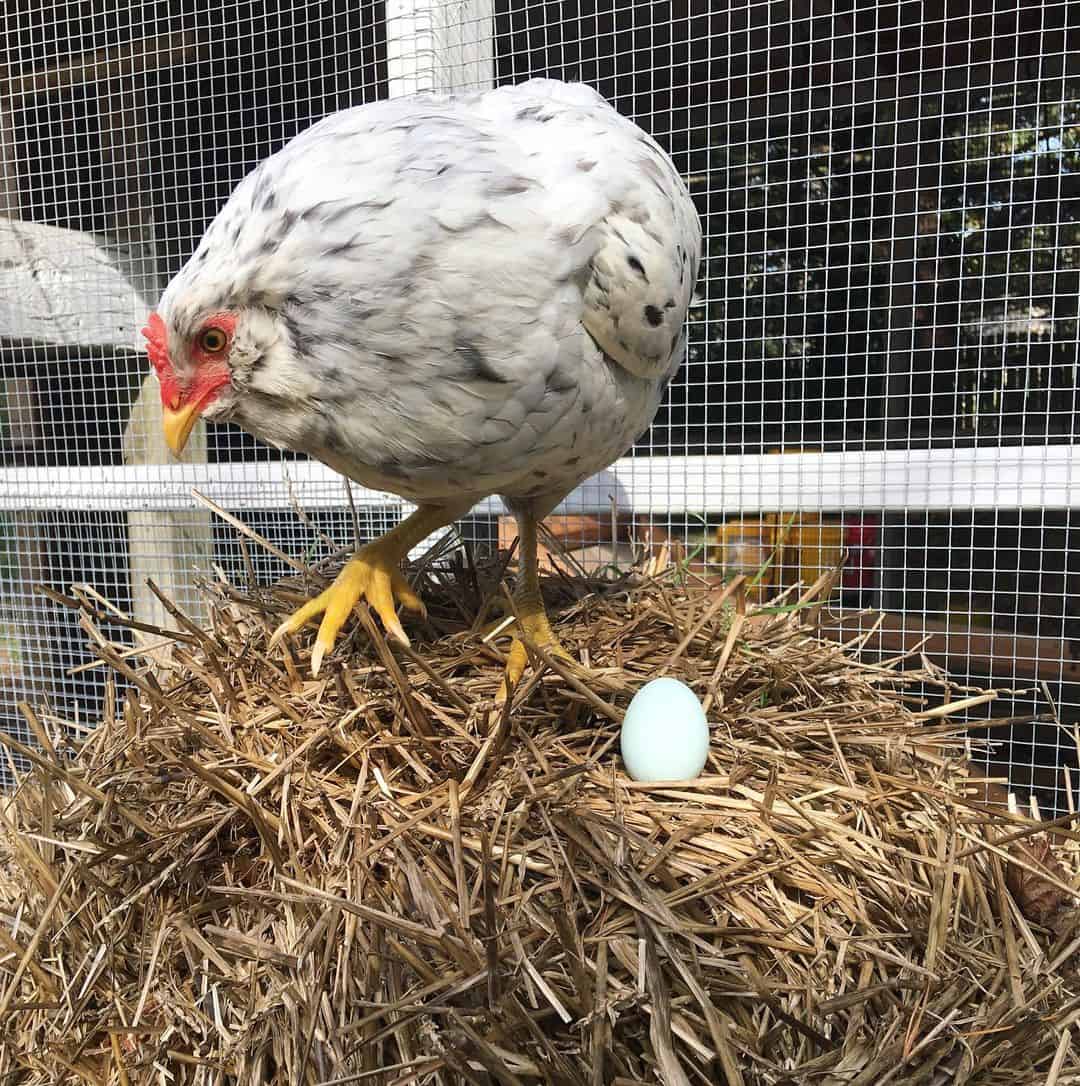
The most recognizable chicken breeds that lay blue eggs include:
- Araucana
- Ameraucana
- Arkansas Blue
- Azure Blue
- Cream Legbar
- Dongxiang
- Easter Egger
- Lushi
- Whiting True Blue
These nine breeds come from areas across the globe and have different backgrounds. While many are recognized breeds by the American Poultry Association, some hybrids or foreign breeds will not be on that list.
Because there are far fewer blue egg layers than those that lay brown eggs, most of these breeds are expensive and require some research to track down a reputable breeder.
1. Araucana Chickens
The Araucana serves as the baseline for many of the blue-layers on this list. This breed is well over a century old, and the modern lines descend from the native Colloncas and Quetros chickens from Chile.
The Colloncas chickens were rumpless (without tail feathers or tailbones) and known to lay blue eggs, while the Quetros had tufted ears, a pea comb, a full tail, and laid brown eggs.
The Araucana comes directly from the cross breeding efforts of these two breeds by Dr. Ruben Bustos in the 1880s. The resulting chickens may have traits from both breeds, including:
- A rumpless back end
- Laying blue eggs
- Tufted ears
The Araucana is relatively rare due to the lethal tufting gene. If both parents have this gene, at least 25 percent of their chicks will die in the shell. Breeders avoid this combination to encourage higher survival of the breed.
Araucanas play a major role in other blue egg laying breeds. Their blue egg gene is dominant, meaning that whenever they are bred with another breed the resulting hens will produce blue or blue-tinted eggs.
They’re not the best breed for backyard flocks due to their distant temperament. Araucana chickens are not very friendly, and they’re not the type to cuddle up with you or coddle small children.
They fly easily and have a high energy level that’s often unpredictable. Combined with their curious nature, this makes them great foragers but poor companions. While they can produce 200 to 250 eggs per year, they’re better suited for laying eggs that continue the line than eggs for consumption.
Araucana chickens come in both bantam and standard sizes. The average Araucana chicken weighs 5.5 to 6.5 pounds, and they come in colors such as gold, black, white, and silver.
2. Ameraucana Chickens
The Ameraucana chickens are one of the direct results of the Araucana breeding (as you can probably tell from their name).
The original efforts for the breed started in 1925 when a Mr. Keller from the Pennsylvania Pratt experimental farm imported Araucanas to the United States, intending to create a breed that laid blue consistently aside from the Araucana.
Originally referred to as the American Araucana, these chickens looked different from flock to flock as recently as the 1970s. Purists bred for the tufts and rumpless appearance of the Araucana, while others aimed for tails and muffs on the new chickens.
It wasn’t until this time that breeders began to work toward a standard that involved closer head feathering and a better feathered body. This followed the latter methodology.
The bantam size of the Ameraucana chickens was admitted to the American Poultry Association in 1979, and the standard size followed in 1984.
The average Ameraucana chicken weighs about 5.5 pounds, regardless of sex. They come in several colors, including shite, silver, blue wheaten, black, and more. The breed is mostly friendly and docile, making them a great addition to most flocks.
Ameraucana chickens produce an average number of eggs, about 180 to 200 per year, and they’re a dual purpose breed. Like the Araucana, they’re mostly reserved for blue-layer breeding efforts.
Many “Ameraucana” chickens found for cheap are actually Easter Eggers that lack the lineage, traits, and effort that is standard for this breed. Expect to pay at least $18 per Ameraucana chick.
3. Arkansas Blue Chickens
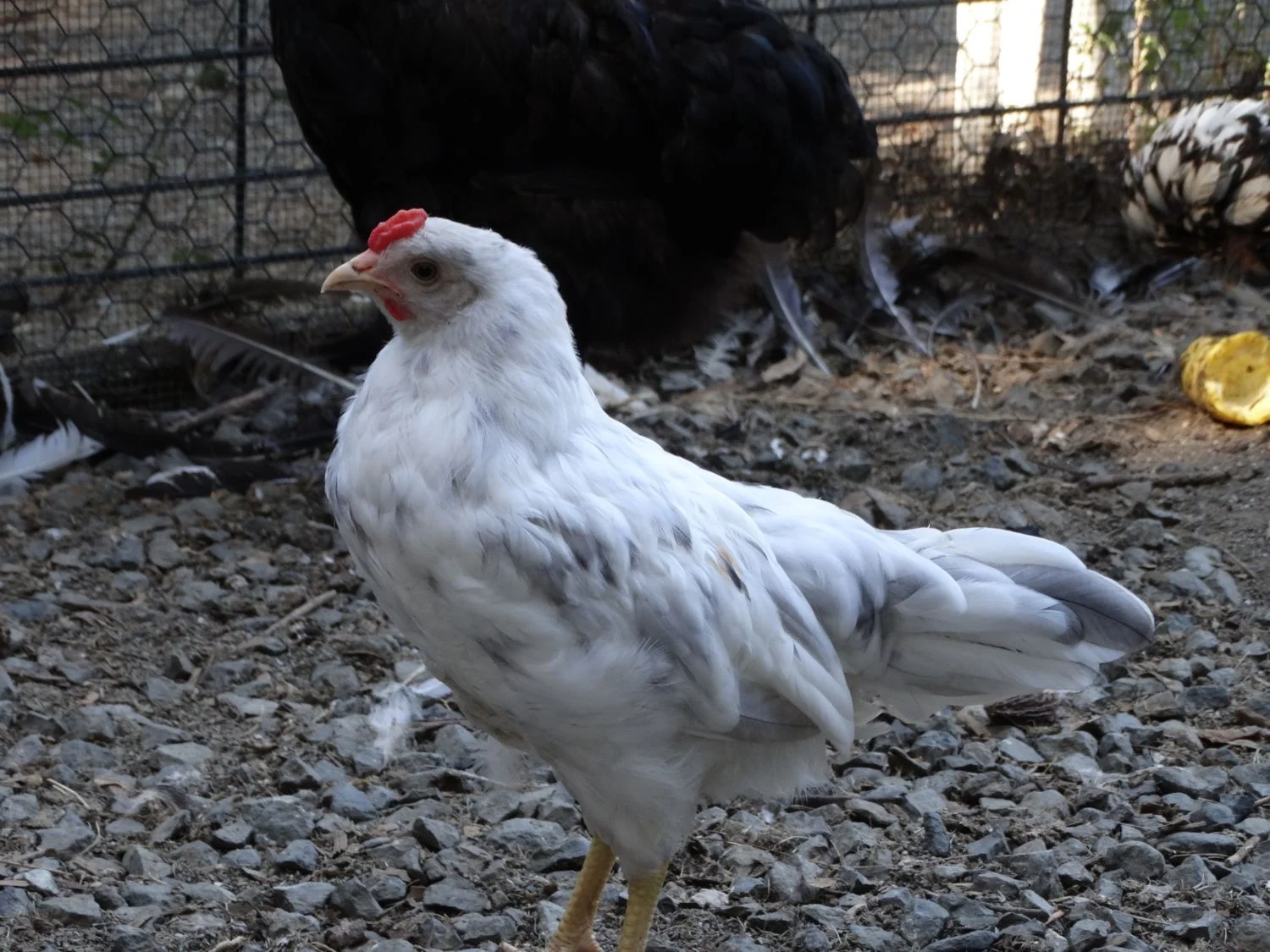
The Arkansas Blue is an experimental breed from the efforts of Dr. R. Keith Bramwell (University of Arkansas). Bramwell crossed the Araucana with commercial strains of the White Leghorn.
This breed is not recognized by the American Poultry Association, but the resulting birds share certain characteristics. They have a clean face and pea comb, yellow skin and legs, and pale, blue gray feathering.
The Arkansas Blue is a flighty breed, and they’re not likely to be your best friend. They also don’t mix well with other chickens, making them a difficult choice for a miscellaneous flock.
The breed is great regarding egg production, and they lay about 250 to 350 per year in their prime years. This makes them a great choice for anyone looking strictly for blue layers of a single breed.
4. Azure Blue Chickens
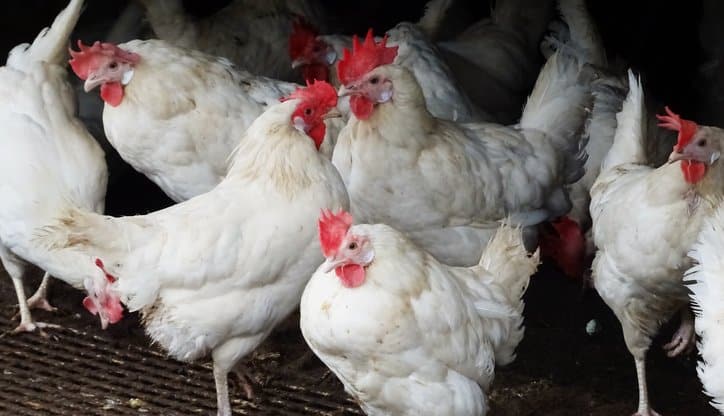
The Azure Blue is another modern experiment from the United States with several contributing breeds, including:
- Welsummer
- Cream Legbars
- White Legbars
Unlike the Arkansas Blue, the Azure Blue has a friendly and curious nature. They’re also on the smaller side of poultry, with hens weighing about 4 pounds and roosters averaging 5 pounds.
The Azure Blue hybrid brings several desirable traits to the table. These are smaller birds with a high egg production, about 300 per year. They have strong egg shells and a friendly disposition that makes them perfect for small-scale farms or even those just starting out.
Beyond this, the Azure Blue does well in winter and can produce eggs year-round. With the right care, these small silver-white chickens can be a staple for any farm.
5. Cream Legbar Chickens
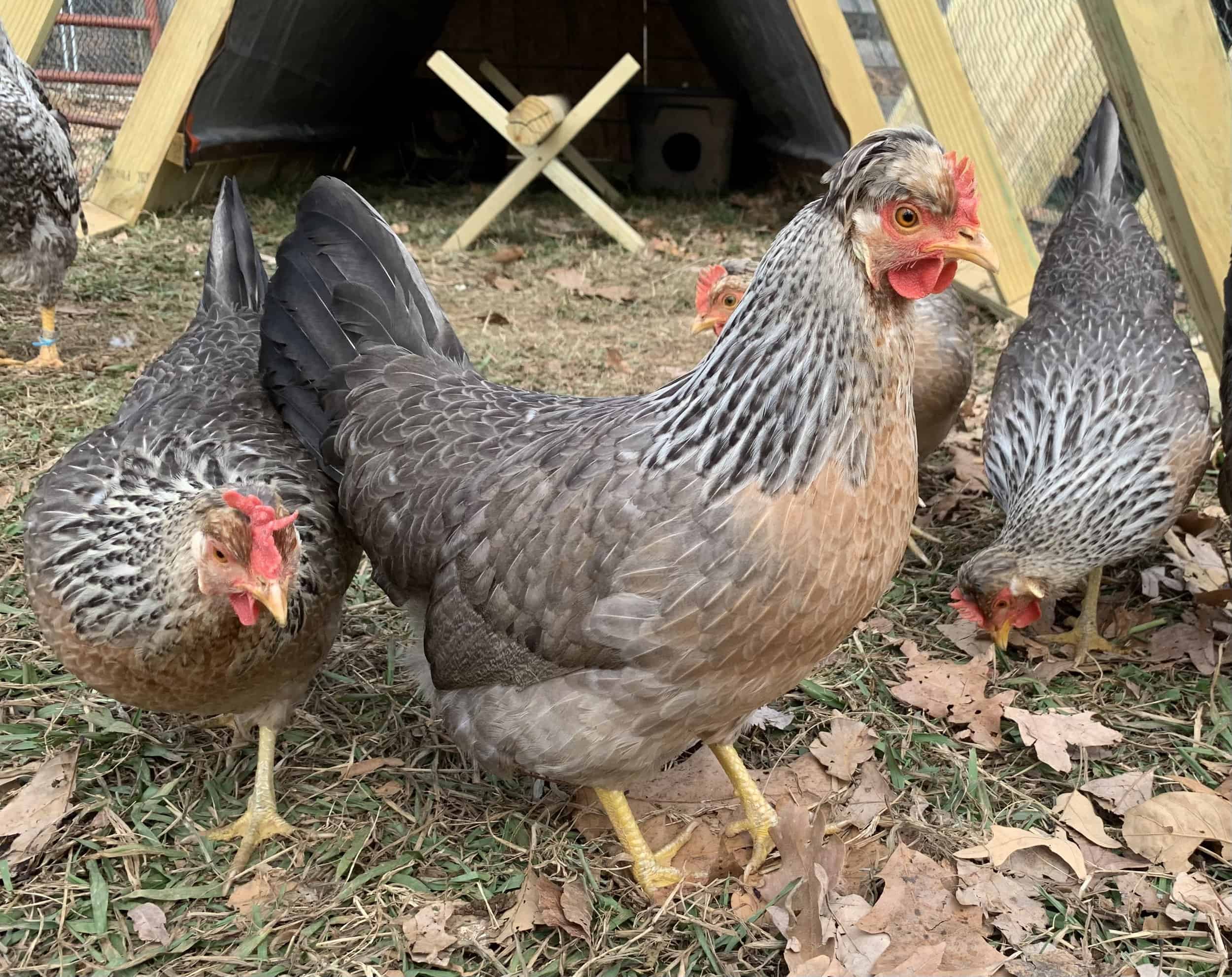
Cream Legbar chickens got their start in the 1900s when two Cambridge professors began working with chicken genetics to create an auto-sexing breed. While the aim wasn’t to produce a blue-laying breeding, the inclusion of the Araucana led to this trait in the breed.
Other contributors include:
The Cream Legbars are indeed an autosexing breed. Males have a lighter coat with a yellow spot on their head, and females have stripes when they hatch. The breed nearly went extinct due to lack of demand before blue eggers were popular, but they’re not highly desirable.
Cream Legbars are usually friendly birds, but they can be independent as well. They’re muscular foragers of average size (about 5.5 to 6.5 pounds) and would rather be running free than confined to a coop.
They produce a smaller number of eggs than other breeds, about 200 per year, and are mostly kept by backyard enthusiasts of the breed. While they have a standard single comb appearance and autosex, they’re not yet recognized by the American Poultry Association.
6. Dongxiang Chickens
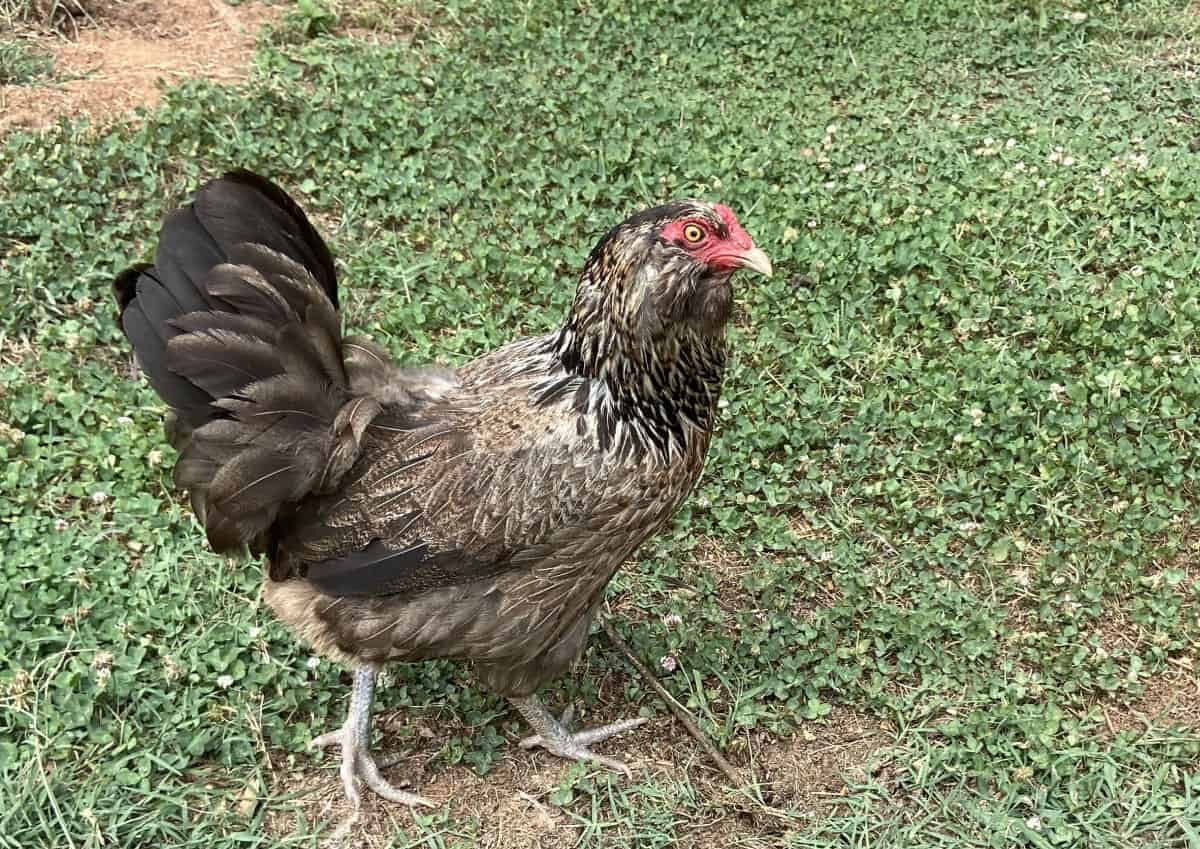
Little is known about the Dongxiang chickens from the subtropical Jiangxi province of southeast China, and the breed does not exist outside of the country.
They’re on the smaller side, only reaching about 3 to 3.5 pounds as an adult, and only lay about 100 small blue eggs per year. While recent efforts have created a partridge-colored Dongxiang that lays more eggs, the original breed is fibro melanistic (has black skin, muscles, and organs) and has a limited production.
7. Easter Egger Chickens
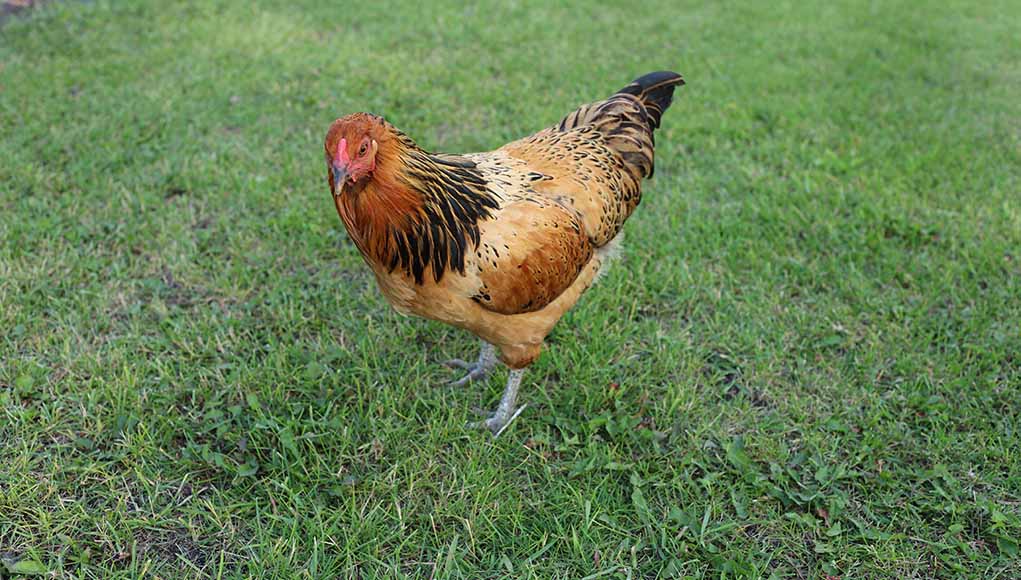
The Easter Egger is the most easily obtained and affordable blue egg layer on this list, but not all of the breed will lay blue eggs. Instead, as their name suggests, the breed will lay one of an array of colors, including:
- Pale pink
- Dark brown
- Olive
- Green
- Blue
It’s impossible to know what color an Easter Egger will lay until you get the first egg, and they’ll lay that color for the rest of their life. Despite this uncertainty, most of them will lay 200 to 250 eggs per year, making them a great addition if egg numbers are the goal.
The Easter Egger hybrid is known to have a friendly and docile nature. They get along well with small children, and acclimate well with most other breeds. Most Easter Eggers have pea combs and muffs, and they come in a variety of colors from white to black, brown, and mixes.
Easter Eggers make good mothers, but they go broody quickly. They’re well-suited for hatching eggs, and they’re also hyper-aware of foragers. Their typical hawk-like appearance is assumed to deter hawks and small predators, potentially improving the safety of your existing flock.
8. Lushi Chickens
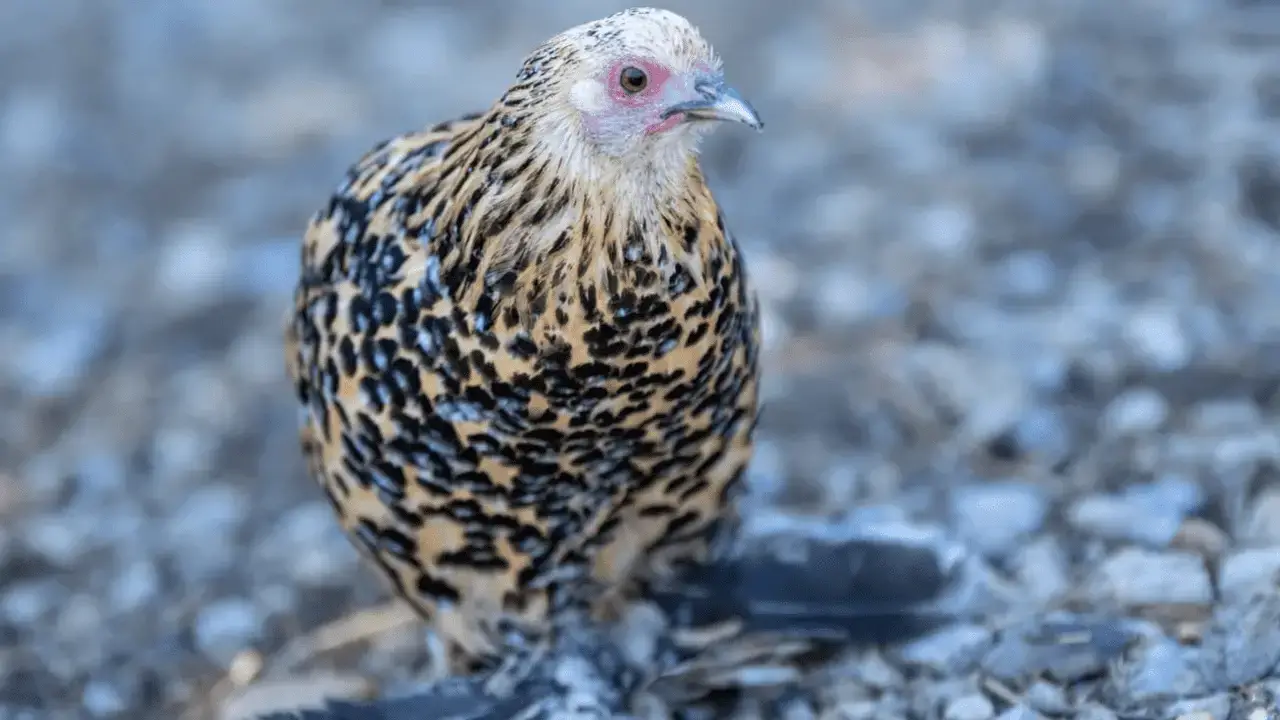
Lushi chickens are another small dual-purpose breed from China. Similar to the Easter Egger, these chickens lay either pink or blue eggs (and you won’t know which color until they finally lay).
Lushi chickens are not recognized by the American Poultry Association, and they have no set standard. Regardless of gender, Lushi chickens are on the smaller side (around 3 to 4 pounds), no feathering on their feet, and have a more minimalistic, single-type comb.
Both sexes have beautiful, dark plumage that may display multiple colors. Females are leaner than males with a less-prominent comb and wattle. Males have more color in their feathers and a pink comb.
9. Whiting True Blue Chickens
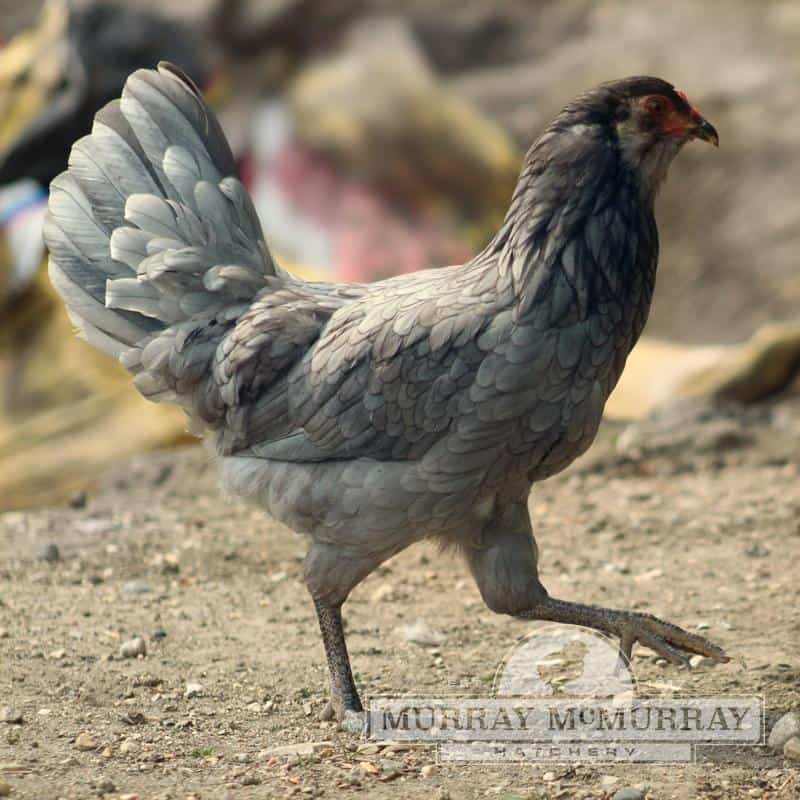
The Whiting True Blue is named for the efforts of Dr. Tom Whiting to create a chicken breed that had superb hackle feathers.
The idea for the breed stems from Henry Hoffman, a fly fisherman who noticed a decline in high-quality feathers available for fly tying. To remedy the issue, Hoffman (who had grown up on a chicken farm) decided to breed his own chickens and reached out to the poultry geneticist for help.
The resulting breed is not recognized, but it met the desired standards of Hoffman for fly fishing activities. Beyond this, the chickens produce blue eggs that make them desirable for chicken keeping hobbyists as well.
Whiting True Blues are fast-growing chickens that max out around 5.5 to 7 pounds. They’re alert, friendly, and curious, but take on the positive sides of these traits and get along well with other breeds.
Understand that they do better when roaming free than if confined. If kept happy and healthy, the Whiting True Blue may lay 200 eggs per year.
Conclusion
Chickens that lay blue eggs (aside from the Easter Egger) are often more expensive and difficult to obtain than other breeds. If you’re lucky enough to add one to your flock, make sure you choose a breed suitable to what you can provide.
Be wary of any blue egg layers offered for cheap; these are often Easter Eggers, and while there’s nothing wrong with the breed, they’re not guaranteed to lay blue. We always suggest researching your breeder before purchasing a more exotic or desirable breed.

